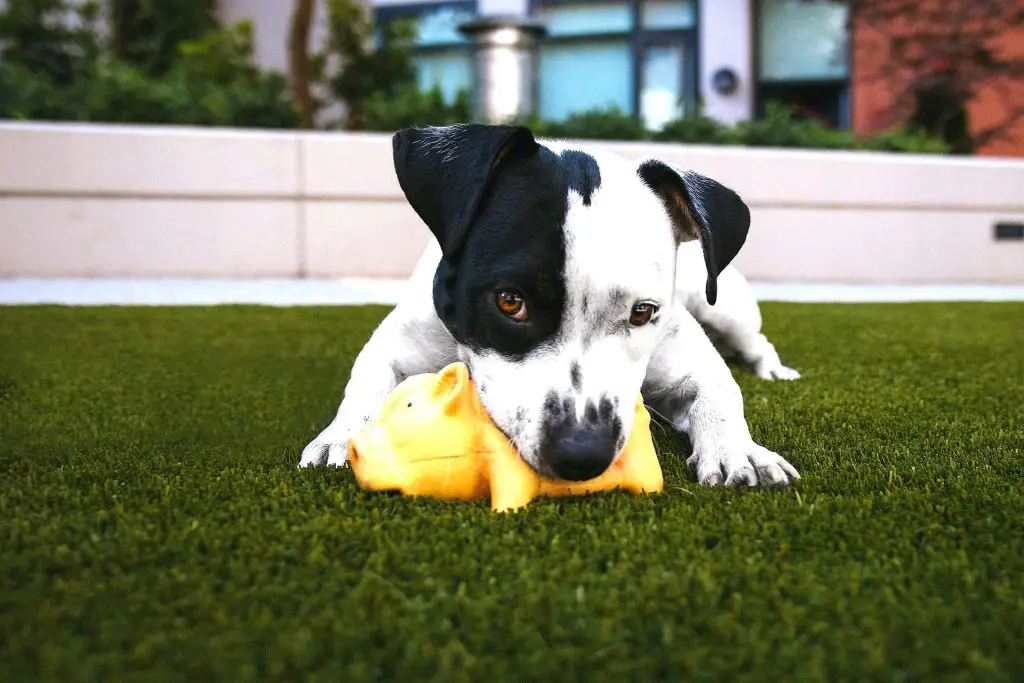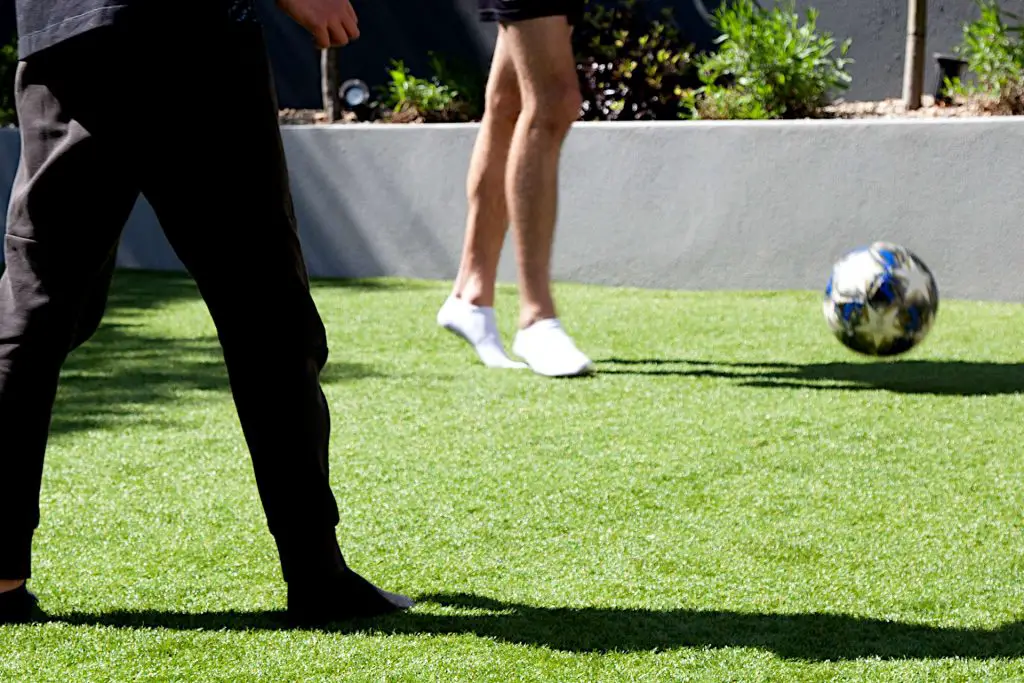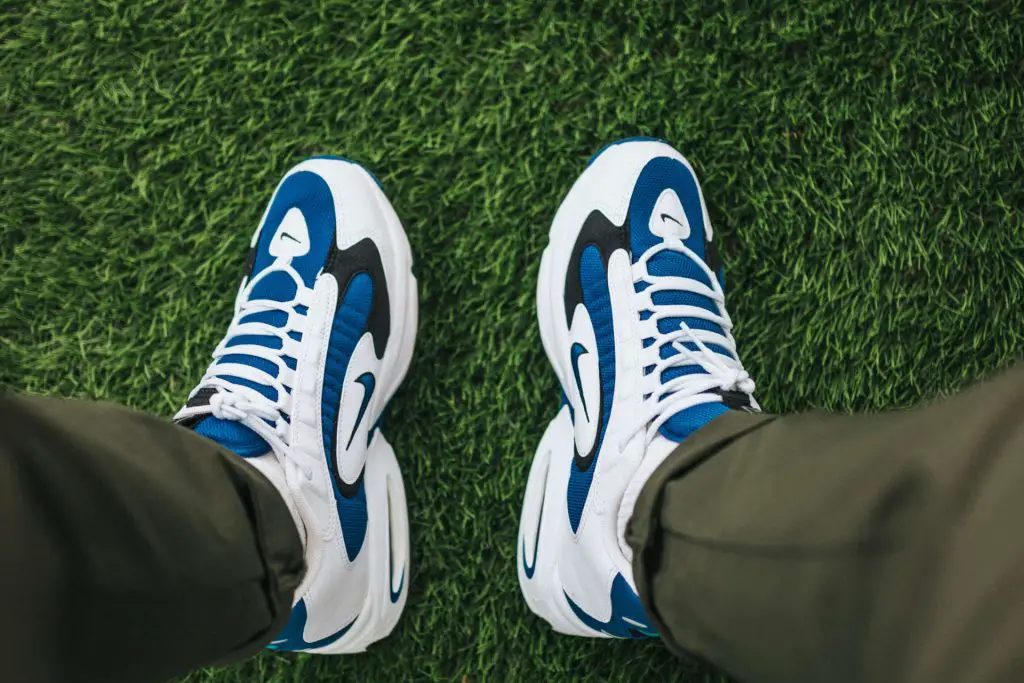How Safe is Artificial Turf For Pets and Children?
The fact that artificial grass does not need to be maintained in any way and can be used both inside and outdoors has made it a popular alternative to genuine grass. But is artificial turf safe for pets and children?
For homeowners, who wish to reap the advantages of having a garden without having to deal with the trouble of maintaining a lawn or people who suffer from allergies artificial turf appears as a good solution. However, because it is created from plastics, it is possible that some individuals will be worried about its safety in relation to its use by children and animals. In this article, we will look at the main issues.
Artificial turf is safe for both children and pets. It is constructed from plastics that are the basis of everyday household objects and as such the synthetic grass itself poses no substantive issues. The only area that you should watch out for is the turf’s infill. Question marks have been raised against crumb rubber one of the more popular infills. However, there are numerous other natural infills that are available that are perfectly safe.
What is artificial grass made of?

Artificial grass is made of nylon, polyethylene, or polypropylene fibers which are manufactured to look like synthetic blades of grass. These fibers are clustered together in order to give the turf a more natural appearance. The backing of artificial turf is made from a polyester tire cord that provides cushioning and support.
The blades of grass are usually green, but can also be found in other colors, such as blue or red. The turf is usually laid out on a field or court in order to provide a playing surface for sports. However, artificial turf can also be found in residential settings, such as in yards or on patios.
Are the Typical Composition Materials of Artificial Grass Dangerous?
No definitive answer exists to this question as the composition of artificial grass can vary depending on the manufacturer. However, some common materials used in artificial grasses include polyethylene, nylon, and recycled tires, which have all been linked to health concerns.
For example, polyethylene has been shown to release harmful chemicals when burned, while exposure to tire crumb rubber has been linked to cancer. As such, it is advisable to research the specific composition of any artificial grass before purchasing it.
How toxic is artificial turf?
The most widely used material for domestic artificial turf is polyethylene. In a recent study, The Royal Society of Chemistry has declared it a safer alternative to other plastics and, thus is safe to say, that its a non-toxic plastic.
If you do look at other materials such as nylon for your artificial lawn this also considered safe, though there are some concerns about the potential for the release of harmful chemicals when the turf is burned.
There have also been questions raised over levels of phthalates present in the synthetic fibers but this question is wider than the use in just the synthetic fibers of artificial turf. This is because the levels are no higher than the typical compositions found in many everyday plastic items.
Indeed, there is no conclusive answer to this question as the research is inconclusive. Some studies suggest that the phthalates, which are actually found in many household products, could be harmful to human health, while other studies are unable to confirm these findings
Are There Any Allergy Risks With Artificial Turf?
If you have allergies, you may be wondering if artificial turf is a good option for you. After all, there is no pollen in artificial turf, and it is made of plastic items which are very common allergens. However, there are some allergy risks associated with artificial turf that you should be aware of before making a decision.
First of all, respiratory issues can occur when breathing in the tiny particles of plastic that make up the turf.
In addition, if you have skin allergies, you may experience a reaction to the turf itself. The turf is made of a variety of materials, including latex, which can cause an allergic reaction in some people. If you have any concerns about allergies, it is best to consult with your doctor for a skin-prick test before installing your artificial turf.
Artificial Grass is Odor Free
Real grass has a distinctive smell which is particularly prevalent when mowing. Artificial grass on the other hand doesn’t have any unpleasant odors, and it won’t affect or annoy dogs or irritate children.
Danger in Use

Another issue that is often raised is the issue of carpet burns. Friction injuries can be common with some types of surfaces. This is particularly the case with nylon fiber surfaces. General play and running around should not be an issue. If though, your children slide around playing soccer or dive about making football tackles then there is always a possibility of burns.
This, of course, is not an issue just confined to artificial turf. It is quite possible to get grass burns or burns from any surface as these are the result of friction. The fact that you can water artificial turf to make it slick may in fact make the polyethylene-made surfaces actually less conducive to receiving burns.
Is Artificial Turf Infill Safe?
Although, as we have discussed, artificial turf itself can be considered as a safe alternative to natural grass, some experts are raising concerns about the safety of artificial turf infill.
Infill is the material that is used to fill in the space between the blades of synthetic grass. It can be made from a variety of materials, including rubber, sand or crumb rubber.
Why You Should Avoid Using Crumb Rubber Infill
Crumb rubber infill is a type of artificial turf made from recycled tires. The problem with this is the materials used in the construction of each tire brand differ and so, it is impossible to definitively list the chemical make-up of the infill.
It has often used in sports fields and playgrounds because it provides a cushioned surface for athletes to play on. However, studies have flagged possible environmental and health issues with the product. There are two main issues:
- First, crumb rubber contains harmful chemicals (carcinogenic) that can leach into the soil and water. These chemicals include lead, mercury, and arsenic. They can cause health problems such as cancer, birth defects, and learning disabilities.
- Second, crumb rubber emits hazardous air pollutants when it is heated by the sun or during use.
Although crumb rubber infill is still used and remains a popular choice for many synthetic turf fields, it probably is not the best option for a household lawn.
Alternative Organic Infills For Artificial Grass

As the popularity of artificial grass continues to grow, so does the search for more environmentally friendly infill options. Two of the most promising alternatives are silica and zeolite.
Silica is a naturally occurring substance that is used in a variety of industries, including glassmaking and construction. It has several advantages as an infill for artificial grass, including good drainage properties and high durability.
Summary: How Safe is Artificial Turf For Pets and Children?
When considering the notion of safety it is probably always best to consider it in relation to other options as opposed to it in isolation. Is artificial turf safe for children and pets? The answer is it is as probably safe as anything else. Indeed, tens of thousands of artificial lawns have been laid throughout the country without incident.
It is true that when it comes to infill there might be some issues with crumb rubber, although even this is as yet no more than anecdotal. There are many alternatives that can be used that are completely safe so it is not a limiting factor.
